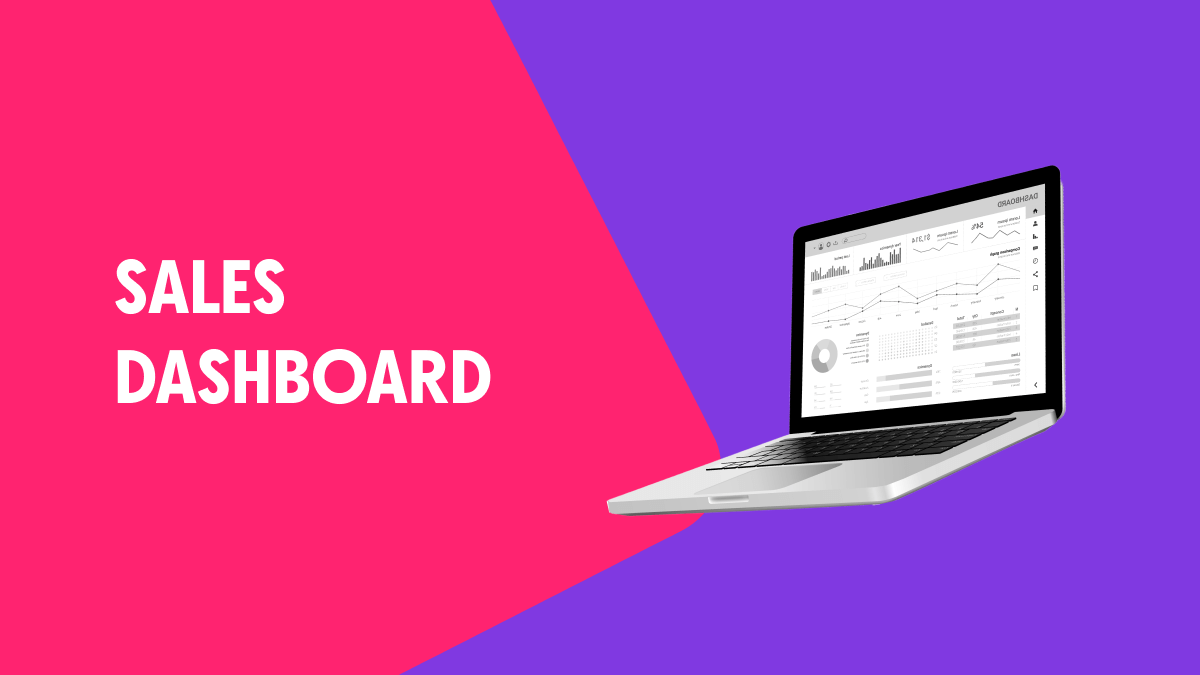How to build a winning sales enablement strategy
Sales training isn’t enough when you’re competing for enterprise sales.
Great sales training programs will make your sales reps better sellers. But what you really want is to make them experts in selling your products.
That’s where a sales enablement strategy comes in — a comprehensive plan of how you can support your sales reps with the resources they need to better understand and execute your sales processes.
The result?
Way more revenue through your pipeline.
In this article, we’ll break down why sales enablement processes are essential for your organization and the seven features every effective sales enablement plan must have.
Now let’s get your team selling like pros.
What is a sales enablement strategy?
Sales enablement is a set of content, sales tools, and software businesses provide to sales teams to help them sell more effectively.
Here at Gong, we define sales enablement strategy as a function that helps the sales team sell better from the time each sales rep is brought on board, to the time they decide to leave the company. If sales enablement is what you provide, your strategy is how you give the tools to your reps and teach them how to use them throughout the buying process.
Why is a sales enablement strategy essential?
Sales enablement isn’t a nice-to-have — it should be a core function of every sales department. There are several reasons for this outlined below.
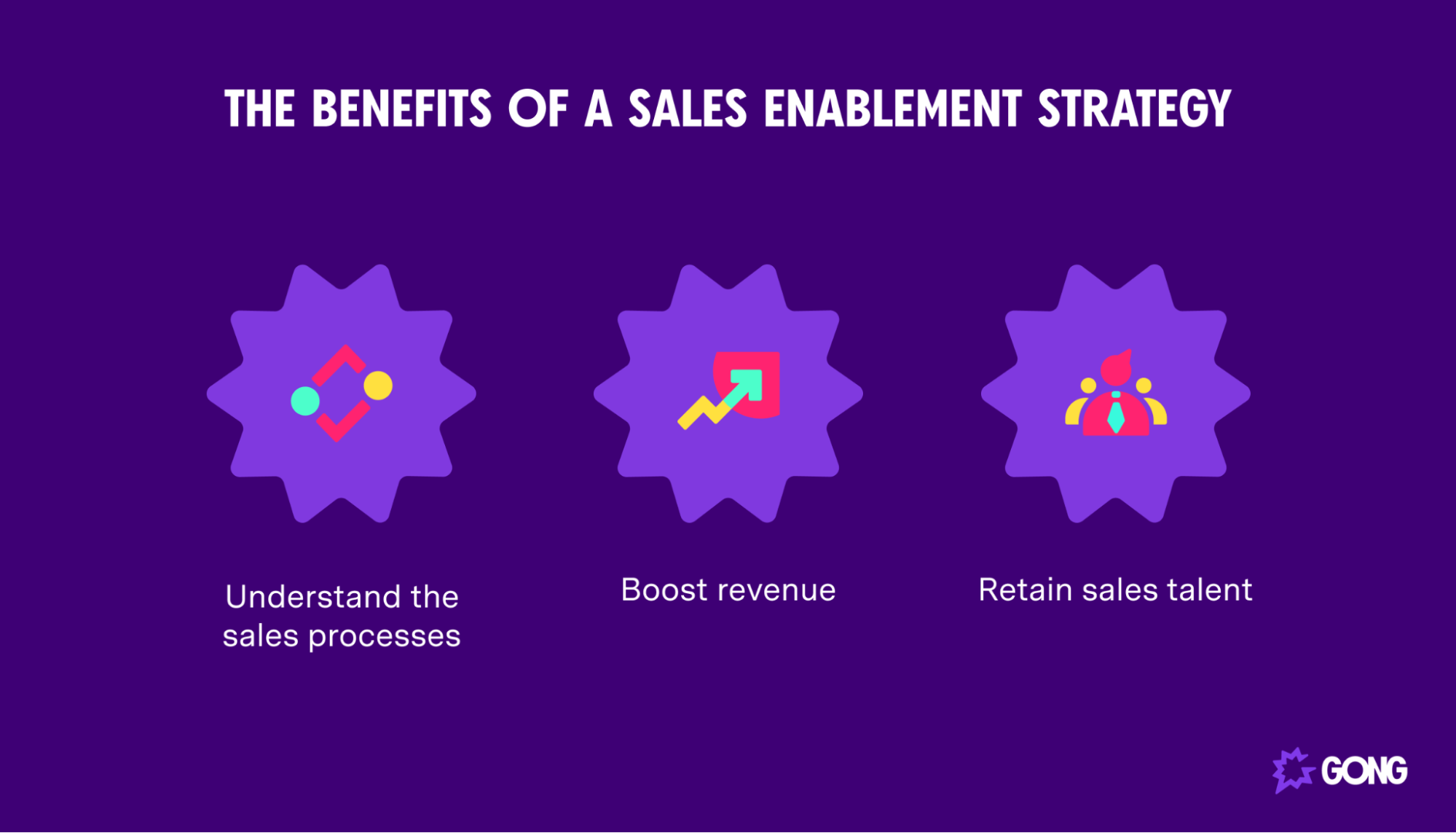
Here’s why a sales enablement playbook is so important.
It helps reps better understand the sales process
Most companies’ sales processes are far from straightforward to understand, let alone execute. In fact, 70% of sales reps believe their company’s sales process has become more challenging within the past 12–18 months. But strong sales enablement best practices can provide the clarity your reps need to sell effectively.
It streamlines sales and boosts revenue
Sales enablement software provides everything sales reps need to close more deals faster and achieve quota attainment.
It’s not just a case of giving them the sales training and support they need, however. Sales enablement also boosts your team’s revenue by helping sales reps deliver the kind of buyer experience today’s decision-makers want — one where reps are able to deliver immense value.
It helps retain sales talent
The majority of sales professionals are actively searching for a new role.
If you don’t want to lose your top sellers, you need to support them as best as possible. A strong sales enablement strategy is a great way to give your reps the tools they need to close more deals (and therefore win more commission).
In short, sales enablement is critical to the success of a revenue organization.
How to create a winning sales enablement strategy
A winning sales enablement strategy must include the following components:
- Clearly defined sales goals
- A best-in-class onboarding program
- Mechanisms in place to boost sales effectiveness
- The ability to accelerate strategic initiatives
- Levers to grow a peer-to-peer learning culture
- Data to uncover pockets of growth
- Regular reporting and evaluation
Follow these steps to create a sales enablement strategy for your company.
1. Define clear goals
Every sales enablement strategy needs a set of clearly defined sales enablement goals. You can base your goals on anything, but we’d recommend basing them on your team’s pain points.
For instance, you can track a range of sales KPIs to identify issues with your reps’ performance and your sales pipeline. Maybe reps spend too long closing accounts, or too many accounts get lost at the end of your sales funnel.
Next, tie those issues to particular behaviors and set goals on how you can improve them. For example, you could commit to a goal of creating a certain number of content pieces to help reps close a target account. Or you could teach reps how to use a new sales enablement tool to speed up their workflow.
2. Create a best-in-class onboarding program
The goal of any solid onboarding program is simple: reduce new rep ramp time. Cut the time it takes for newbies to land their first (and second and third and 100th) deal.
The sooner a salesperson can start selling (and achieving buy-in) the happier they will be, the better off your team will be, and the closer you will get to blowing out your sales goals.
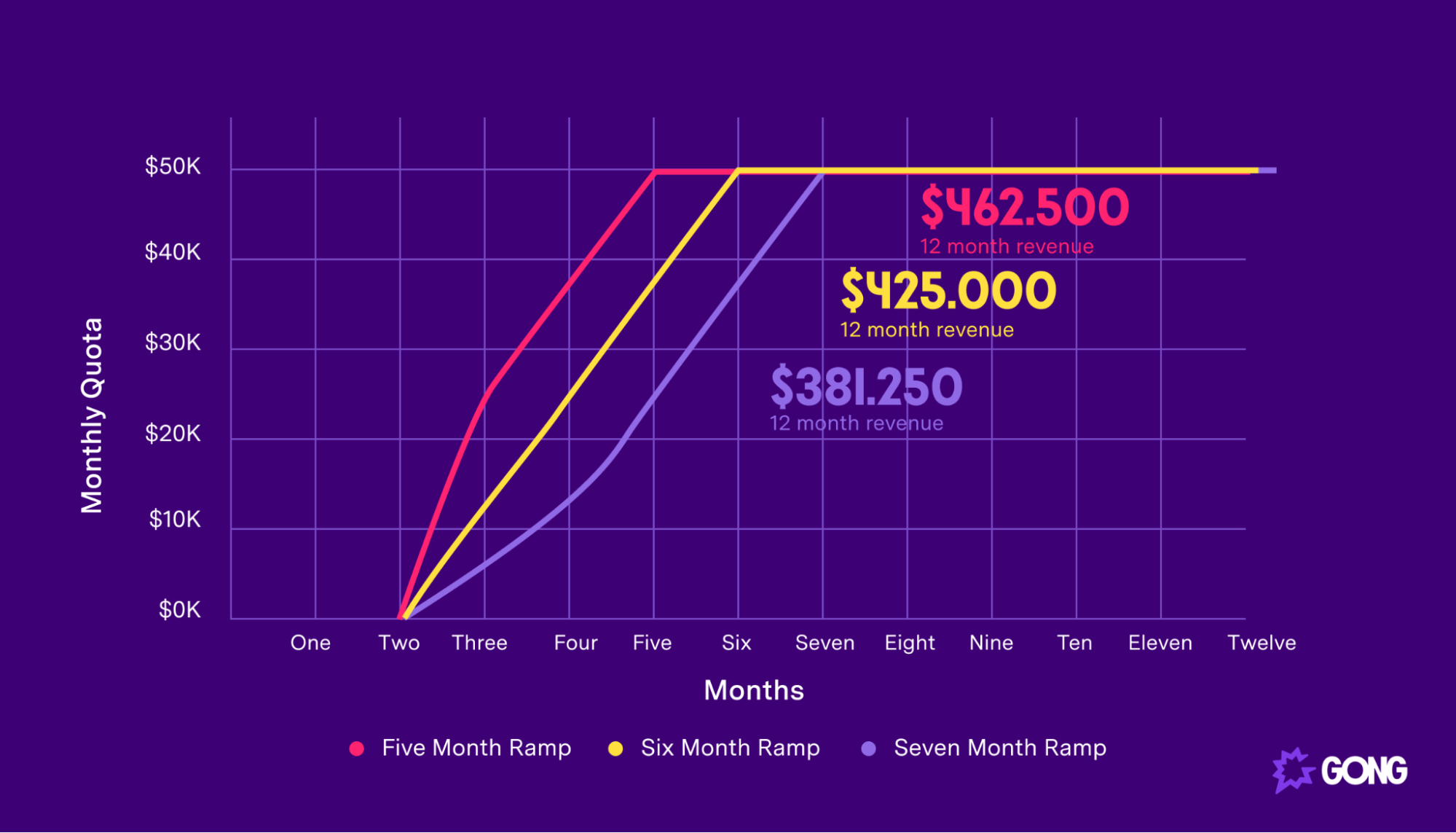
The shorter your onboarding ramp, the more annual revenue new reps can generate. There’s a potential difference of $80,000 between a seven-month onboarding ramp and a five-month onboarding ramp.
So yeah, ensuring your onboarding program is running smoothly is mission-critical.
But what does an onboarding program need to include to support sales enablement strategy?
A dedicated onboarding track for sales roles that reviews the key elements of your go-to-market strategy (GTM):
Ideal Customer Profile (ICP)
Your sales ICP must take into account firmographic and persona attributes. That means looking something like the image below.
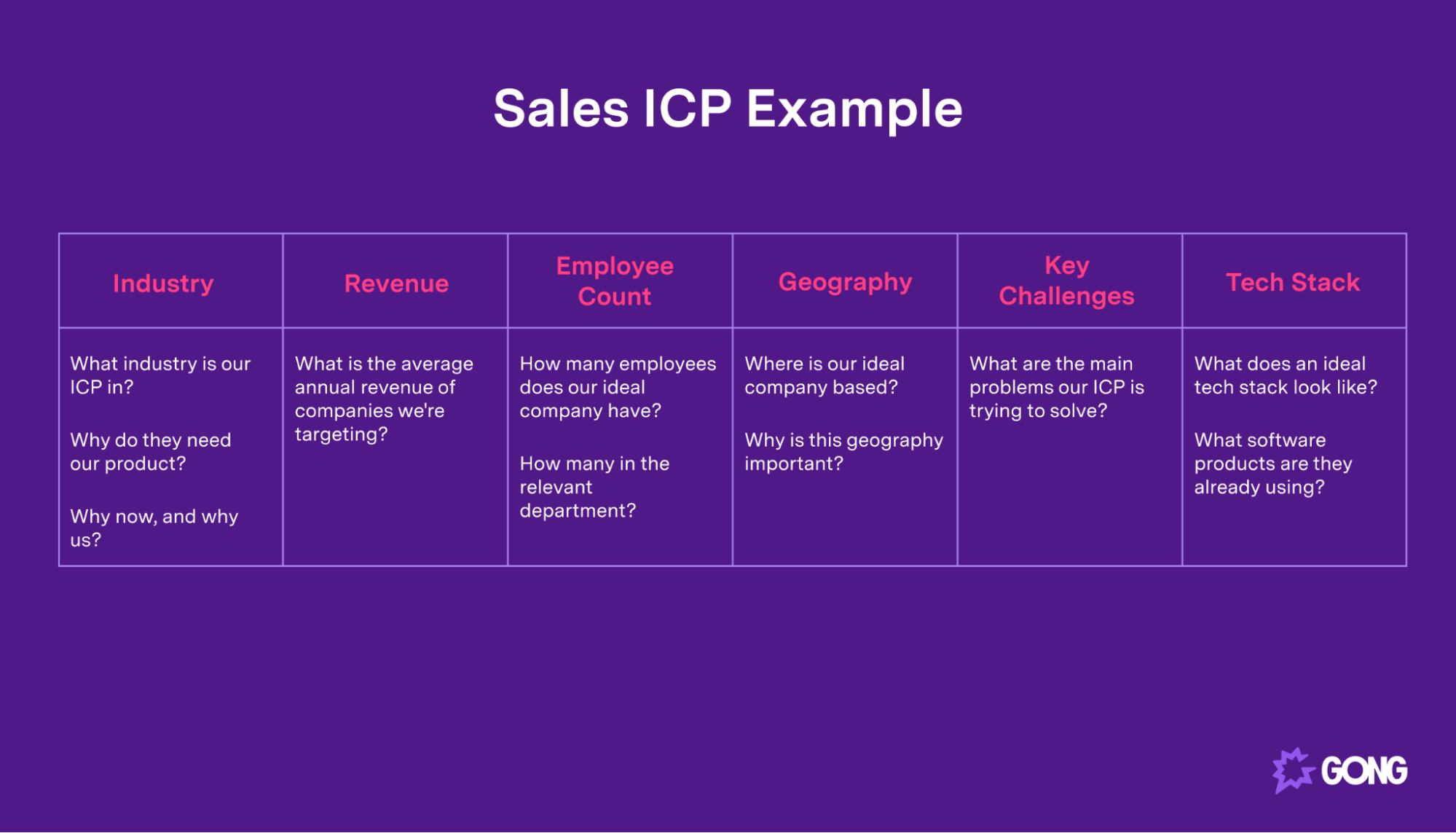
You must learn who your ideal customers are, what they care about, how to position your product/service to them, which features they care about, which problems do they solve, which outcomes do they enable, and so on.
We shared our 7-step sales strategy framework here. It’s certainly worth the full read, but the TL;DR when it comes to ICP is this:
To move from good enough targeting to great targeting, be sure to get all of the above information AND ALSO ask (and answer) “who should we NOT target?”
Don’t assume your sales team are professional ICP builders. Train continuously (we recommend quarterly). Understand who to (and NOT to) target.
Scripts: Email + Call + Demo
First off, a sales script is a starting point. It’s a guide, a template. Scripts should not be copy/pasted, nor should they be read verbatim.
Scripts help ensure messaging is consistent and on-point. Scripts are guideposts to help sellers to know what works (and what doesn’t work).
Reading from a script is NOT your answer to selling more.
Instead consider including best-in-class examples of calls (recorded calls, that is) AND customers’ stories (on sales sheets, live on your site, and shared in recorded calls). Scripts can be bucketed into 3 categories:
- Email (take these sales email templates for example)
- Call (like a cold calling script)
- Demo (these sales call scripts include a demo call script)
Email scripts can (and should) be customized and personalized to fit various stages in the sales cycle as well as buyer personas and industries. See the ICP section above.
Call scripts are “templates” for how to run an effective meeting. “Say this” and “don’t say that.” Use these words (but not those). Start with this. End with that.
Here’s an example of a simple call script:
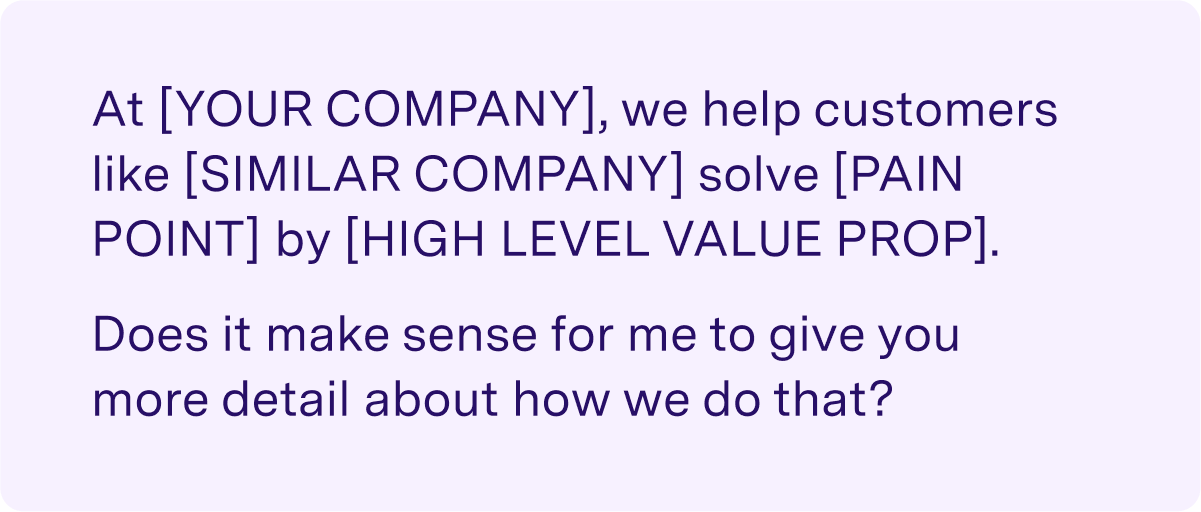
If you’re a Gong customer* you know that your best-in-class calls all live in Gong’s Call Libraries, ideally sorted and organized into easy-to-find folders and subfolders.
*If you aren’t a Gong customer yet, what are you waiting for?
Demo scripts are the starting points for how to run an effective demo of your product or service. They can live in PowerPoint/Google slides or in various one-pagers internal to your company. No matter where they exist and in what format, having demo scripts ensures your sales reps are on top of their game as your product evolves with new and enhanced features.
Note: Email, call, and demo scripts are important for new sales reps, but since no product or service is static, all scripts should be updated regularly (and reps should be trained regularly) to ensure the most recent information is being shared).
Sales process documentation
As you are onboarding new reps, it’s essential they understand your sales process.
Your sales process documentation should include detailed answers (charts, one-pagers, call recordings, scripts!, and so on) to the following:
- What does a good cycle look like?
- What to be on the lookout for during the sales process?
- How (and when) to bring in the right personas at the right moment in the cycle
Unless your sales team is brand new, you already have answers to all of the above. And if you are using Gong, you have libraries chock full of examples of how your A-Team reps have messaged this to potential customers.
That’s a whole part of your sales enablement strategy that literally takes care of itself.
3. Build mechanisms to boost sales effectiveness
The goal of boosting sales effectiveness is… wait for it… to increase win rates!
Your sales enablement strategy to turbo-charge win rates must include the following sales enablement content:
Objection handling training
The definition of insanity is doing the same thing over and over (and over) again and expecting different results. Stop. Losing. Deals. To. The. Same. Objections. STOP.
After reviewing nearly 70,000 sales meetings from the Gong database of 5,000,000+ recorded calls AND having our team analyze them with AI, we identified which tactics best correlate with success. You can find them in our uncensored guide to objection-handling techniques.
No matter how your reps handle objections, make sure they slow things down.
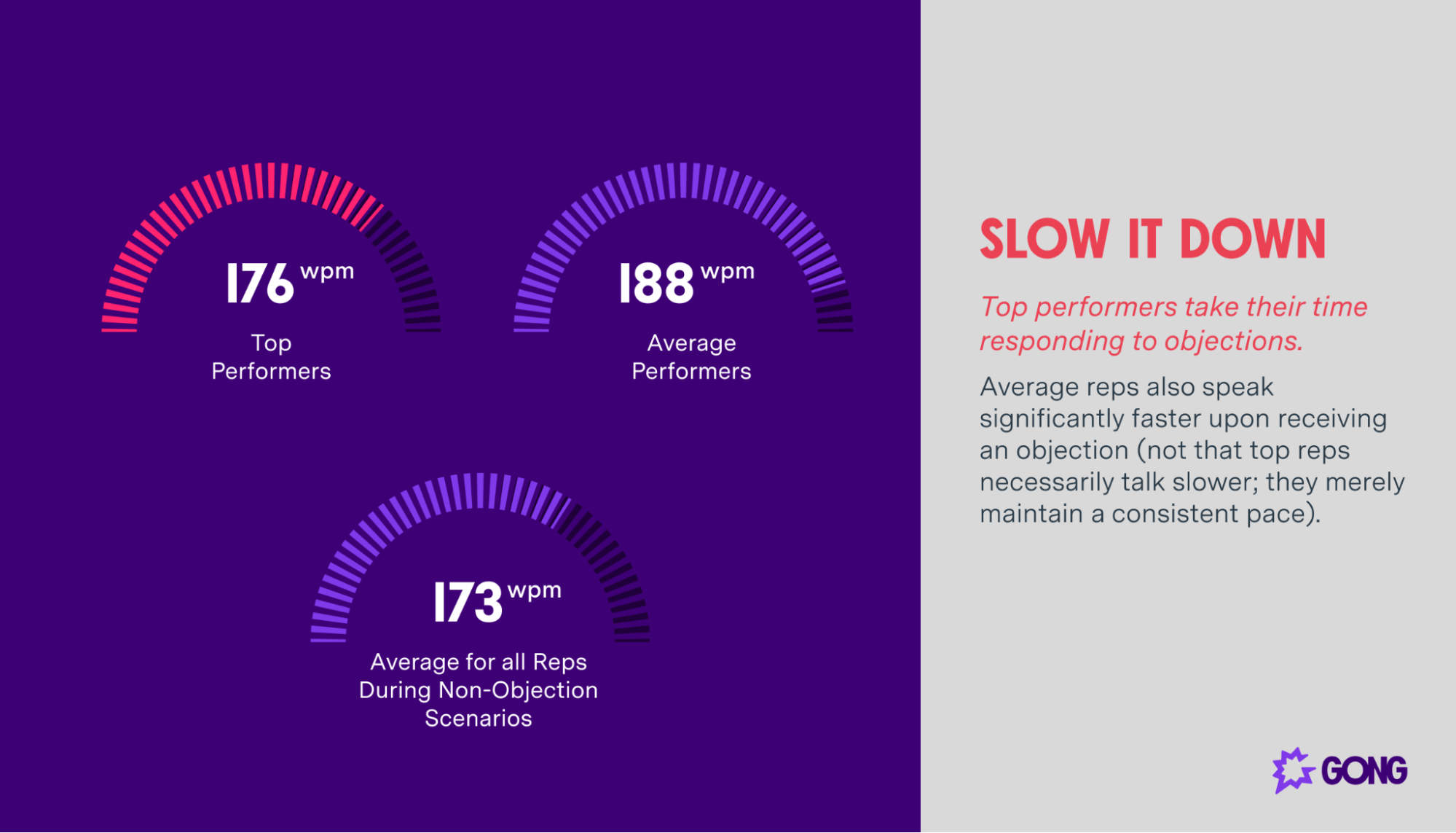
The best sales reps take their time when responding to objections, speaking at an average of 176 words per minute.
Battle cards
AKA vital information your sellers need to know about your product, your market, and your competition to win against “the other guys.”
You’ll want to include the following information for each competitor:
- Name
- Pricing
- Unique differentiators
- Use cases you support (and which ones they don’t)
- PROOF: What customer stories, reviews, or other information can you present that can be used internally by your champion to defend going with your product vs the competition?
- BONUS: Landmine questions, i.e. questions that will put competitors in a tough spot if asked, to plant in conversation with buyers.
Need a template to get started? Grab the Sales Battle Card Template for Ultra-Competitive Deals.
Speaking of competitive deals: Gong customer, Workato, used the Gong-Slack integration to set up a #competitive channel, one that alerted team members when a competitor was mentioned. Workato took things a few steps further to make the alert truly actionable: they intelligently added a link to the specific battle card so the rep could be armed with how best to respond.
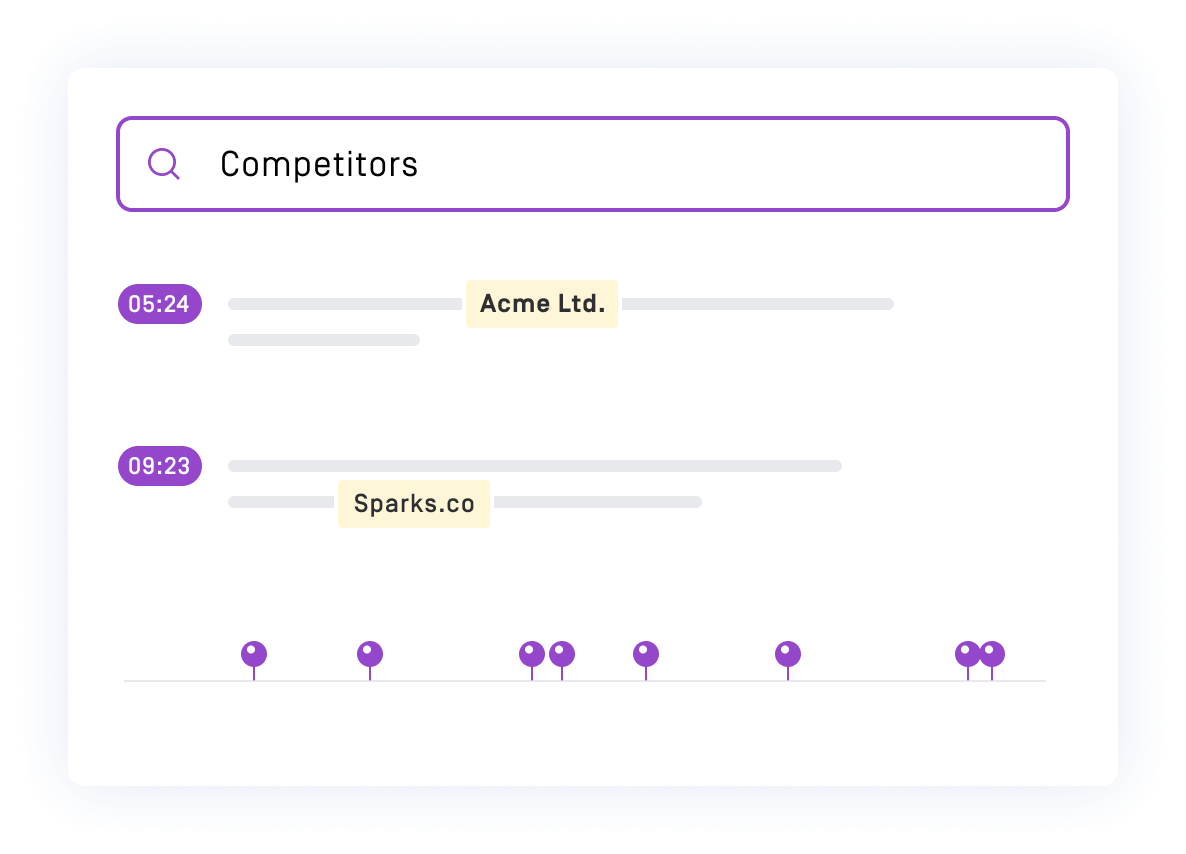
Sales documentation
You can’t boost sales effectiveness without having sales documentation at the ready.
These documents include:
- Your price sheet: Pricing is different in every organization. Some companies are very open about their pricing (listed on their website) while others are a bit more… coy. No matter what your pricing looks like, it’s important that sales reps have an updated copy of your list prices (note: maybe don’t use the word “list” when discussing pricing). Note: If your pricing changes, make sure your price sheet changes to reflect the updates. Also, if reps have leeway into what discounts they can offer (before involving a manager) be sure that information is part of your price sheet.
- Product and feature listing: There is not much more awkward during a sales call than having to say “I don’t know” when asked about a specific product or feature. Worse yet, saying, “Yeah, we can do that” only to have to backtrack on the next call. Make sure sales reps know the products and features you offer like the back of their hand. If you need training sessions (and mini-test) to ensure they’ve got it down pat, do it!
- Security: Also true for all technical questions. Answers need to be clear (and accurate) – provide documents to support your reps in the “tough part” of their calls. Plus they can use these to follow up with more technical key stakeholders.
Specific talk tracks
If you are hoping to increase win rates, you must have specific talk tracks nailed.
As a star sales rep, you must be an expert in:
- Your product or service
- Your industry
- Your competitors (maybe not an expert, but you must know why you are the better solution)
At a minimum.
And it’s important to rely on data to determine what “winning” talk tracks look (and sound) like. A winning strategy starts with winning data. Gong understands what talk tracks work, so you can track initiatives, and pick real winners vetted by the market.
4. Accelerate strategic initiatives
A stellar sales enablement strategy must help to accelerate strategic initiatives, specifically GTM ones.
Sales teams are on the front lines and must be well-versed in all things related to GTM strategic initiatives.
Generally, this means new and updated talk tracks…
For specific verticals or products: Your product will change and evolve over time. Your team will enter new verticals (and exit old ones that are not performing). It’s imperative that your talk tracks are consistent with current verticals and offerings.
When sales methodology changes: Depending on the sales methodology you pick or switch to (at Gong, we’re a Sandler shop), you’ll set behavioral norms that you want reps to adhere to. For example, when setting an upfront contract (“My main concern is…”) to when to approach certain topics (i.e. pricing should be in the first stage or presentation.) or how often to spend listening. Hint: regardless of the sales methodology, the best sales reps listen more than they talk.
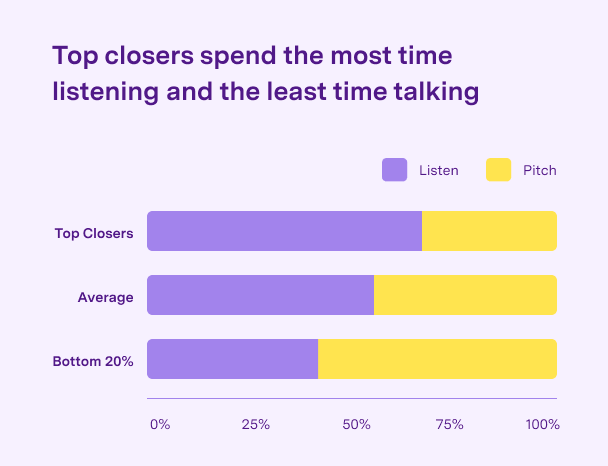
For new/updated territories: Sales territories will be added (and will be taken away … and updated/changed) over time. That’s just the nature of sales — and organization growth. Talk tracks need to reflect these changes as well as the changing competitive landscape. Talk tracks need to be mindful of local regulations (cough — GDPR — cough) and cultural norms. Determine if talking about price over email is just fine… or taboo (Gong’s take).
For all of the above, using the best examples of already winning behavior is the edge that winning sales enablement teams leverage. Skip the “test and learn” phase and start showing big results from the get-go.
5. Grow a peer-to-peer learning culture
If you’re doing sales enablement “right,” it will take care of itself.
Said another way, if you put the right levers in place, you will begin to build/grow/cultivate a true peer-to-peer learning culture at your organization.
Here’s an example of what that could look like in the real world:
Your sales team is a mix of entry-level reps, junior sales folks, and veterans. Some have years of experience in your industry, while others are brand new to your space.
In other words, you have lots of different reps with various levels of experience.
The good news: Everyone has something valuable to share and everyone has something valuable to learn
But how do you ensure that knowledge is shared amongst the entire team and not locked into one rep’s brain, never to be released into the world?
Call libraries.
The Gong platform empowers reps to listen, learn, and replicate behavior from top reps in your organization. It gives them the opportunity to shadow every call from your A-players, then replicates the winning behaviors. So you get insights like this:
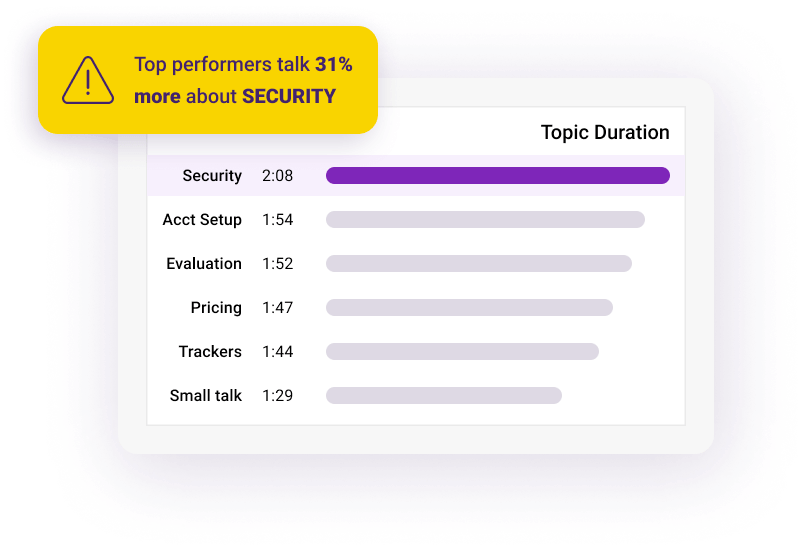
And these call libraries help keep everything organized and easily accessible.
We recommend sorting calls into various folders (and subfolders) — by vertical, by company size, by who you are speaking with (think persona), by pipeline stage, and so on.
Once you pull that off, you’ll be running a well-oiled, peer-to-peer learning culture… and on your way to sales enablement heaven.
6. Use data to uncover pockets of growth
Data is your sales enablement strategy’s best friend.
It can show you where your team is struggling — so you know where to focus training.
It can measure how effective your training is — so you can spot which members on the team need a refresher.
It can tell you what ROI your sales enablement strategy is driving for your organization — so you can get even better.
Here’s how data makes that all of that possible:
Data helps understand rep ramp time: Use data to measure the time it takes each rep to land their first deal. Get more granular by sorting ramp time by class/cohort, experience level, time at the company, and so on. You can even use data to show incremental gains (hopefully!) with each new onboarding class.
Data helps understand deal cycle speed: Use data to measure how quickly it takes to close a deal — on average — based on when each class/cohort received training. How does this deal cycle speed compare to the rest of the organization? Are deals closing faster with each new onboarding class? You can also use data to understand why some reps are closing deals faster than others.

Chances are it’s because the reps who close faster spend more time discussing next steps.
Data helps monitor new talk track adoption: Use data automation to see if teams are actually using new talk tracks. Create alerts based on keywords. Track these alerts across class/cohorts and compare to the organization as a whole. Learn which reps are (or are not) weaving new talk tracks into their conversations (and use data to understand how this is impacting close rate and deal size). Give a refresher where/when it’s needed most.
Data helps improve peer-to-peer learning: Use data to see who is listening to calls. Which reps are giving feedback. See who isn’t helping raise all boats and get them bought… so they can share their best examples and contribute to their peers’ success. This is the behavior you’ll want to celebrate and encourage.
This is the kind of data that a sales enablement technology like Gong excels at generating and analyzing. Gong’s call-listening and analysis functionality means sales managers get a data-driven, guided workflow that shows them which reps they should help and how.
Gong can also help sales enablement teams better understand the customer experience and thus create even more engaging sales collateral. For instance, by using Gong, digital consulting company SoftServe can access the real voice of a buyer to determine their immediate needs.
Chris Cassarino, AVP, Global Lead of Business Development, acknowledges Gong’s role in giving his company real-time visibility into the customer journey: “It tells us exactly what they’re feeling, what their concerns are, and allows us to pivot based on those conversations.”
7. Evaluate your sales enablement strategy regularly
You’ll need to keep track of the impact of your sales enablement strategy to determine whether it’s working as planned and meeting the goals you outlined at the very start of this process.
You’ll want a combination of quantitative and qualitative data to understand your strategy’s impact.
Get quantitative data by building out sales reports to track the impact of your efforts on sales performance. Paying attention to sales enablement metrics will be key. These metrics include:
- Average sales cycle length
- Total pipeline opportunity
- Forecasted sales vs actual sales
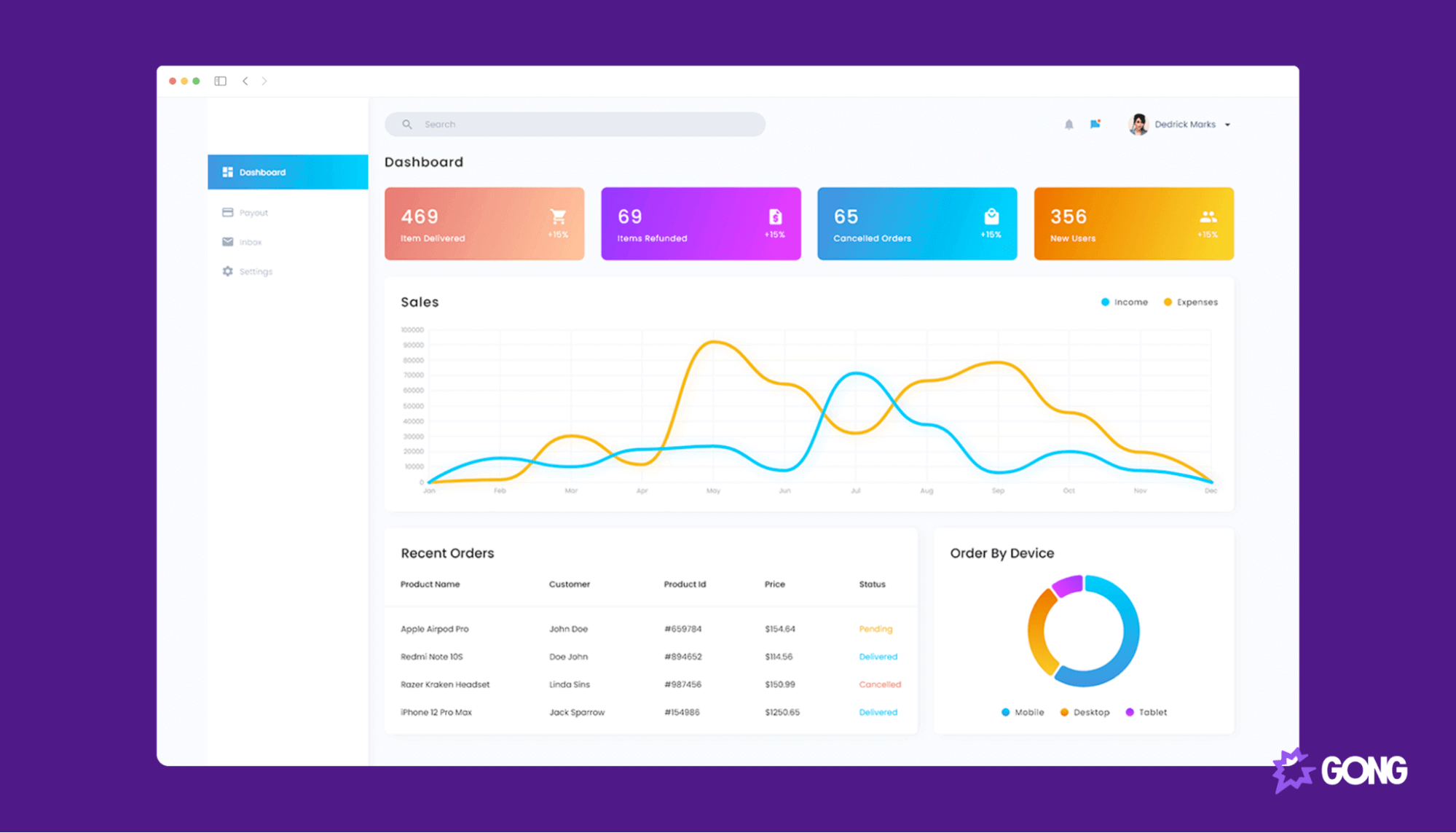
You’ll also want to track any metrics that are specific to the sales behaviors you want to change. This could be a metric like deals lost by pipeline stage if you want to increase the number of deals your reps close.
At the same time, run surveys with your sales teams to get honest feedback on the sales enablement collateral you’re giving them and the strategy as a whole. If they don’t see the value of your efforts or agree that your sales collateral is actually helping them close deals, then it’s time to go back to the drawing board.
Don’t feel bad about ripping up case studies or blog posts and starting again. Your sales enablement strategy will constantly change, and removing irrelevant resources is vital if you want to keep it fresh and effective.
Who is responsible for sales enablement?
Contrary to popular opinion, Gartner believes neither marketing nor sales are responsible for sales enablement:
“What was once the responsibility of product marketing, sales operations, or of a single sales trainer, sales enablement is now supported by dedicated teams founded within the sales organization” (bold is mine).
We agree.
Sales enablement should be separate and jointly owned by both sales and marketing.
Marketing is responsible for content management and for creating a lot of the relevant content associated with sales enablement. Things like blog posts, case studies, and even product demos are created in part or entirely by the marketing team.
Sales is responsible for acquiring sales enablement tools (sales software and Customer Relationship Management tools (CRMs) like Salesforce) and advising reps on how to best use the content that marketing creates throughout the buyer’s journey—whether that’s sending to prospects directly or posting on social media platforms like LinkedIn.
The reason that sales enablement should be seen as a separate function which specific sales enablement leaders is because of the level of teamwork needed for successful sales enablement.
Sales leaders need to advise on the kinds of materials they require, and marketing leaders need to set clear deadlines on when content can be requested and delivered.
Make sales enablement easy with Gong
An effective sales enablement strategy can supercharge your sales reps’ efforts. But creating and executing the right strategy doesn’t have to be scary or complicated.
Smart sales leaders use Gong’s revenue intelligence technology to speed up onboarding, monitor talk track adoption, uncover teachable moments, and increase sales productivity. Discover an easy way to stay on top of your sales enablement efforts by booking a demo today.
